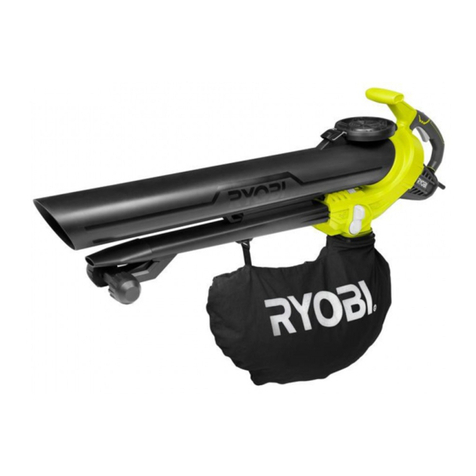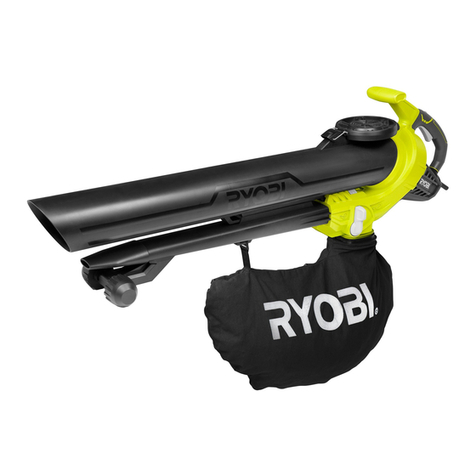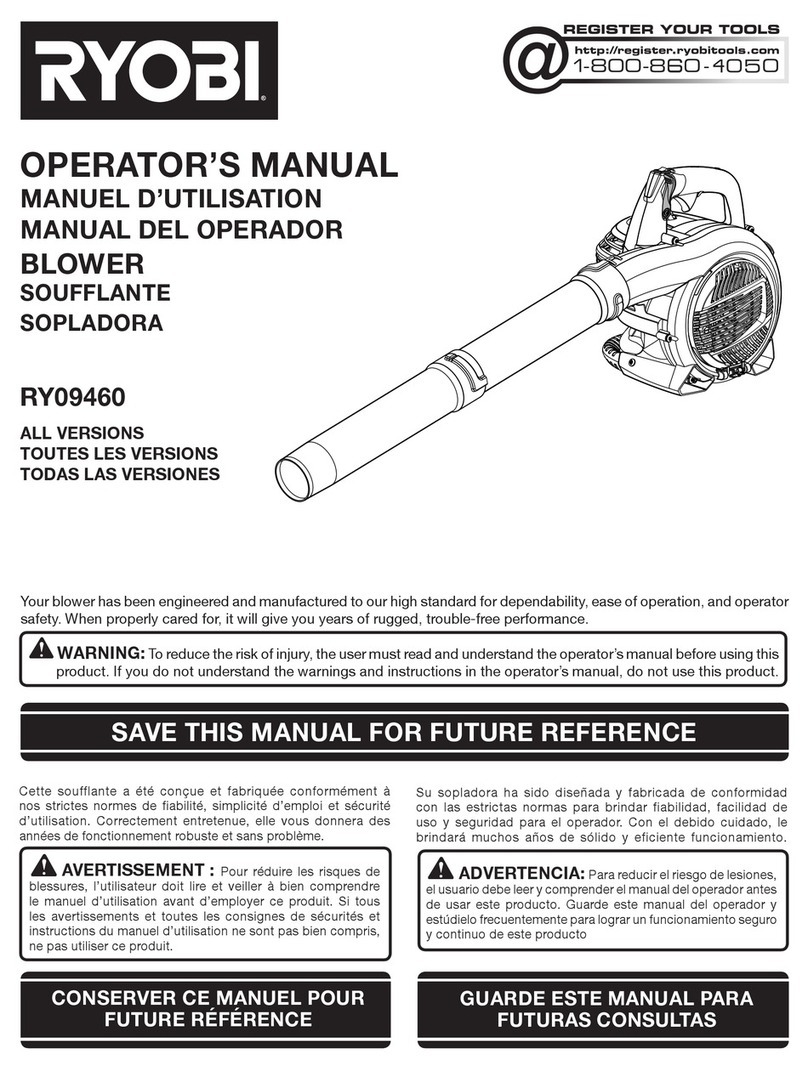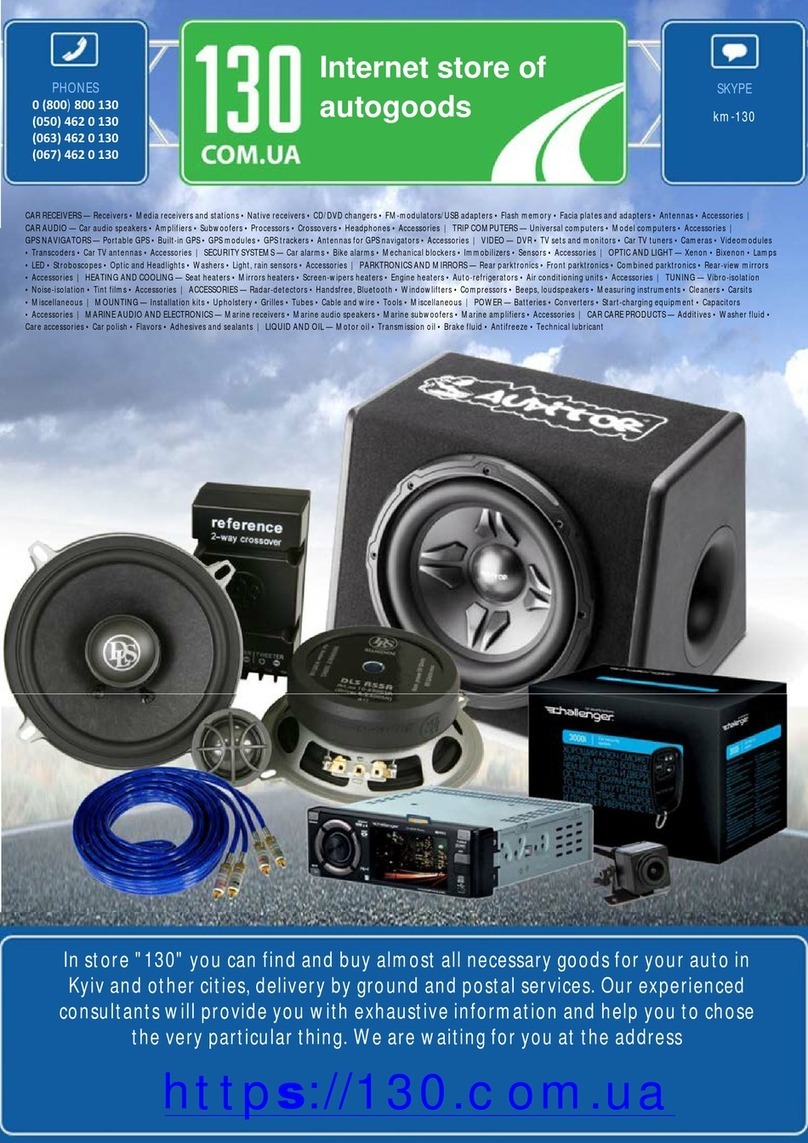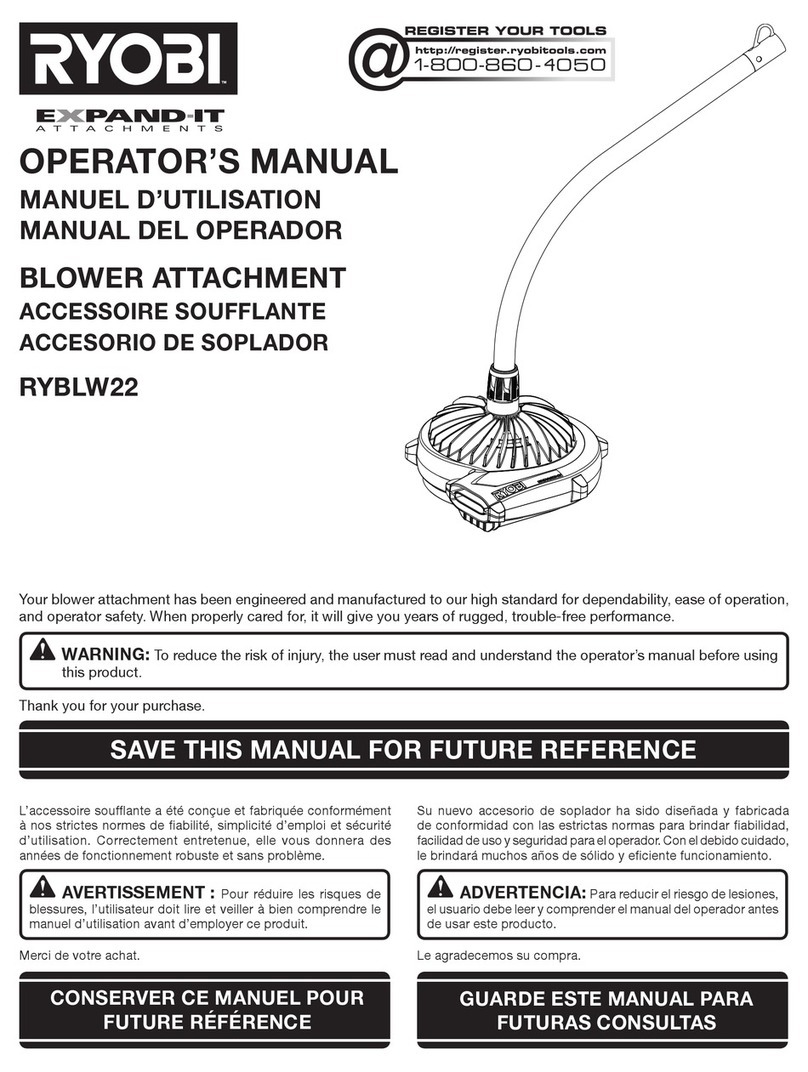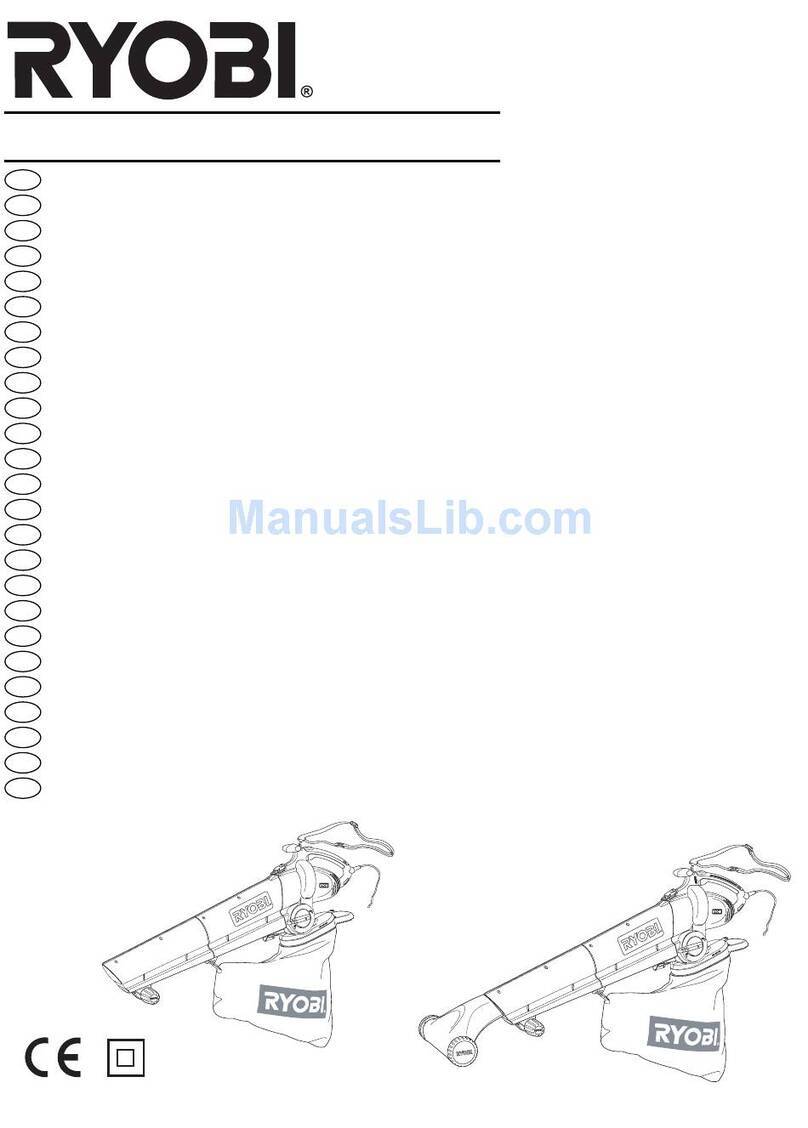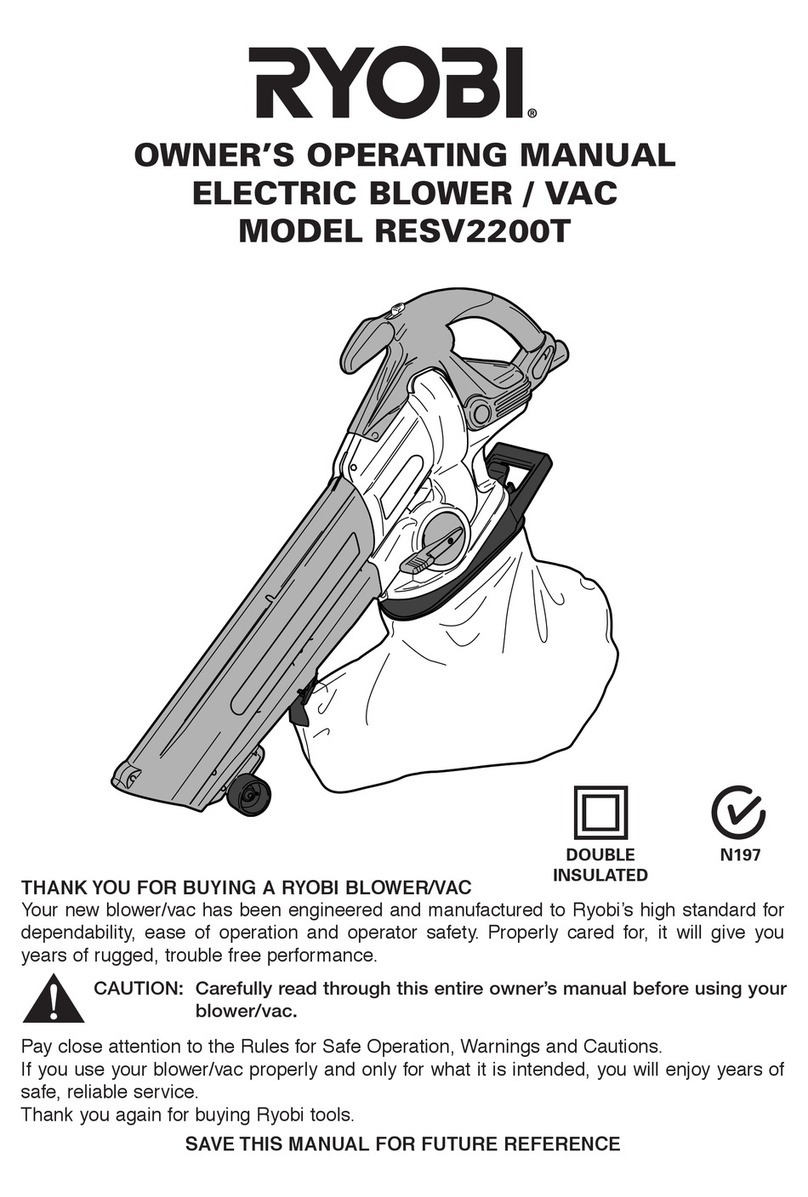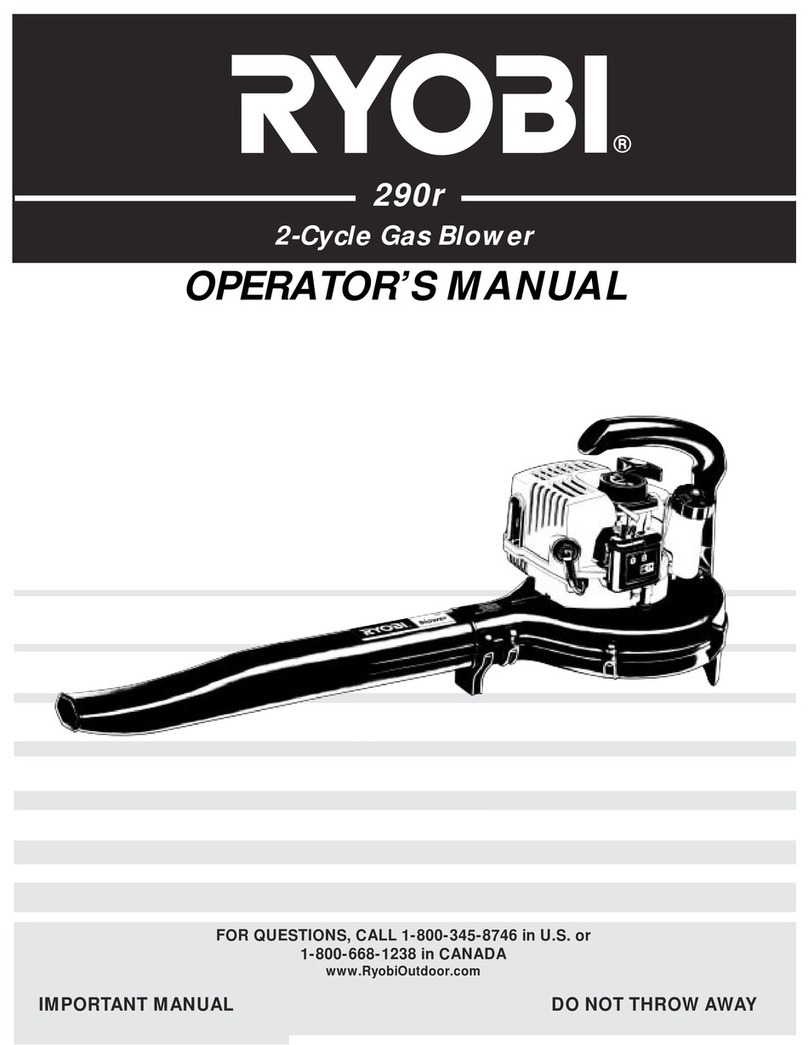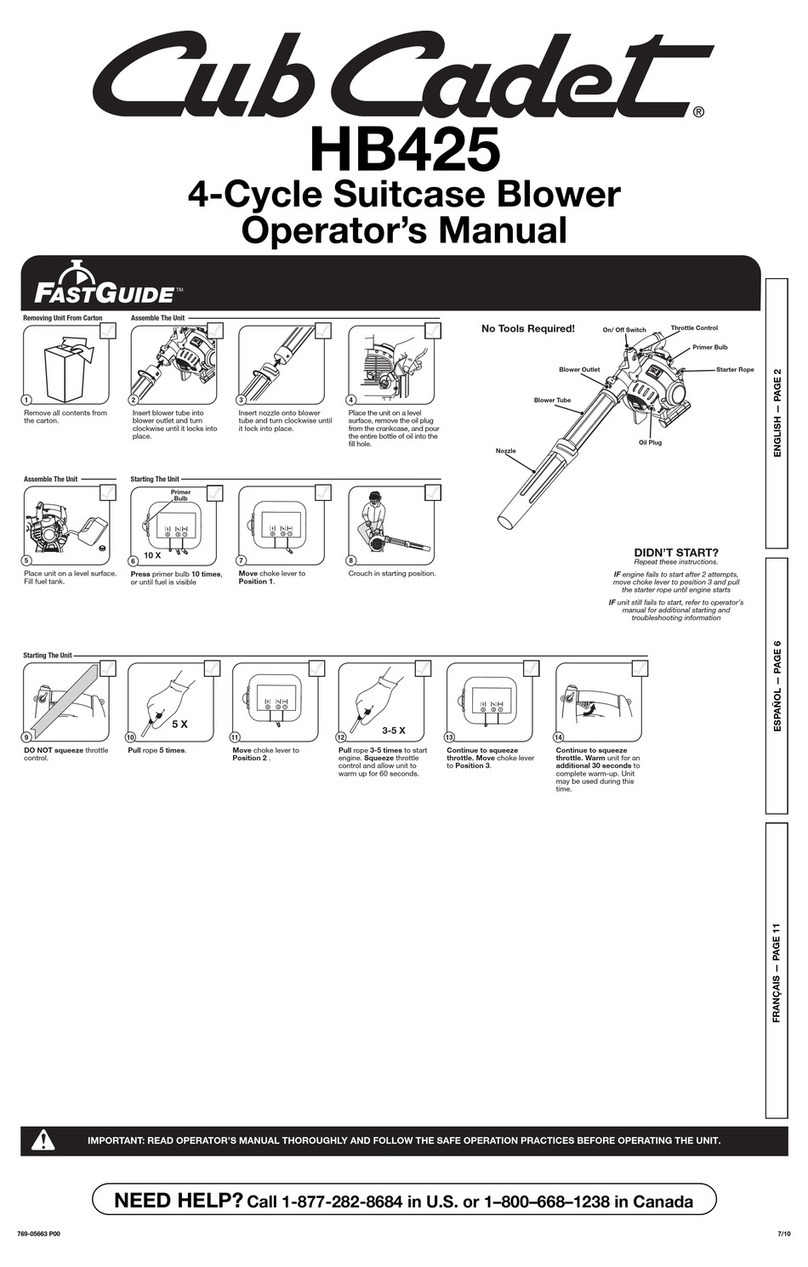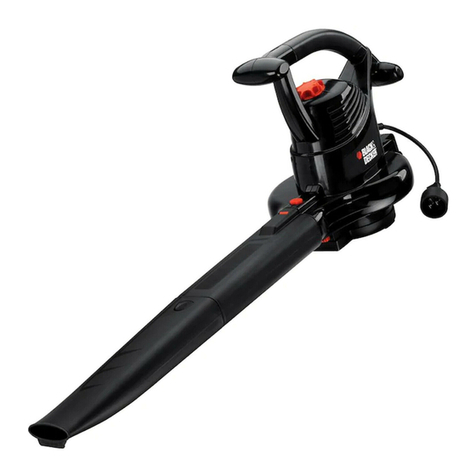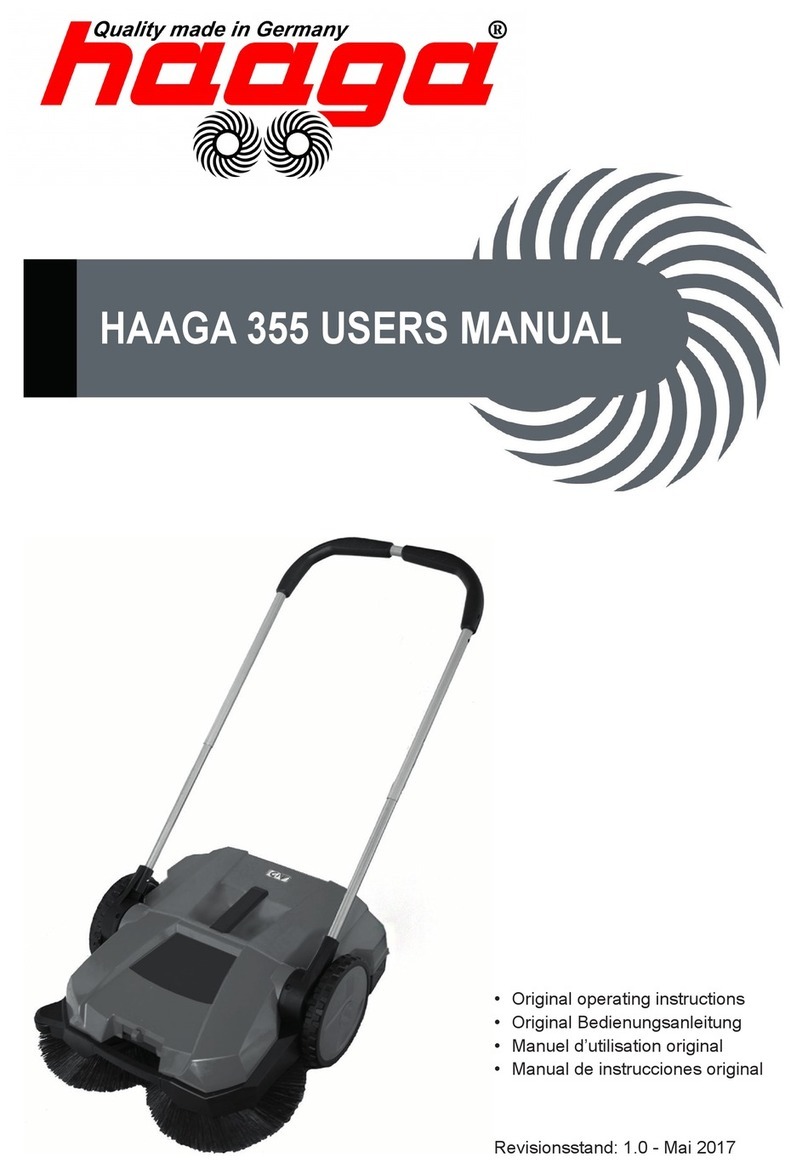1
Safety, performance, and dependability have
been given top priority in the design of your
cordless blower.
INTENDED USE
The cordless blower is only intended for
use outdoors in dry and well-illuminated
conditions.
The product is not intended to be used by
children or persons with reduced physical,
mental or sensory capabilities.
The product is intended for blowing light
debris including leaves, grass, and other
garden refuse.
WARNING
When using the product, the safety rules
must be followed. For your own safety
and that of bystanders, you must read and
fully understand these instructions before
operating the product. Please keep these
instructions safe for later use.
WARNING
This product is not intended to be used by
children or persons with reduced physical,
mental, or sensory capabilities. Children
should be adequately supervised to ensure
they do not play with the product.
GENERAL SAFETY WARNINGS
TRAINING
■Read the instructions carefully. Be familiar
with the controls and the correct use of the
product.
■Never allow children, persons with reduced
physical, sensory or mental capabilities
or lack of experience and knowledge, or
people unfamiliar with these instructions
to use the product. Local regulations may
restrict the age of the operator.
■Keep in mind, that the operator or user
is responsible for accidents or hazards
occurring to other people or their property.
■Keep bystanders, children and pets 15 m
away from the area of operation. Stop the
product if anyone enters the area.
■Never use the product when you are tired,
ill or under the influence of alcohol, drugs
or medicine.
PREPARATION
■Some regions have regulations that restrict
the use of the product to some operations.
Check with your local authority for advice.
■While operating the product always wear
substantial footwear and long trousers.
Do not operate the product when barefoot
or wearing open sandals. Avoid wearing
clothing that is loose fitting or that has
hanging cords or ties; they can be caught
in moving parts.
■Do not wear loose clothing or jewellery that
can be drawn into the air inlet.
■Secure long hair so it is above shoulder
level to prevent entanglement in moving
parts.
■Wear hearing protection at all times while
operating the product. This product is
extremely noisy and permanent hearing
may result if precautions to limit your
exposure, reduce noise and wear hearing
protection are not strictly adhered to.
■Wear full eye protection at all times while
operating this product. The manufacturer
strongly suggests a full face mask or fully
enclosed goggles. Normal spectacles or
sun glasses are not adequate protection.
Objects can be thrown at high speed by
the powerful air jet at any time and may
rebound from hard surfaces toward the
operator.
■Ensure before each use that all controls
and safety devices function correctly. Do
not use the product if the “off” switch does
not stop the product.
■Before each use, always inspect the
housing for damage. Ensure that guards
and handles are in place and properly
secured.
■Return to an authorised service centre to
replace damaged or unreadable labels.
■Never operate the product with defective
guards or shields, or without safety devices
in place.
■Keep all cooling air inlets clear of debris.
■Use rakes and brooms to loosen debris
before blowing.
■Clear the work area before each use.
Remove all objects such as rocks, broken
glass, nails, wires, or string which can be
blown a considerable distance by high
velocity air.




